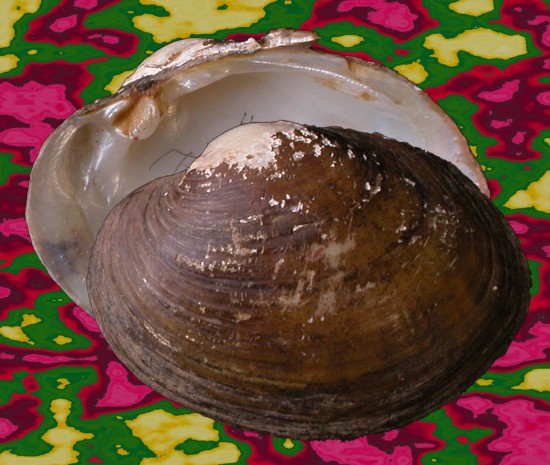| Page last updated
29 April 2005 |
Mussel of the Month
The May 2005 Mussel of the Month is Hamiota perovalis. Members of the North American genus Hamiota go fishing for their host fish using super-conglutinate lures.

ANSP 56416. Alabama River, J.S. Phillips!
(type of U. perovalis Conrad, 1834).
Freshwater mussels of the bivalve order Unionoida have an interesting life cycle: their larvae are parasitic upon freshwater vertebrates. As the well-known Red Queen Hypothesis would predict, this interaction between host and parasite has produced some interesting evolutionary results. In most freshwater mussels, the larvae reach their host passively, but H. perovalis uses as super-conglutinate lure to "fish" for its host. Amazing!
Hamiota is the first genus introduced to classify North American mussels in over 20 years. We are sure that there are even more to come! Keep up the good work, Kevin and Paul!
Classification:
Phylum Mollusca
Class Bivalvia
Subclass Palaeoheterodonta
Order Unionoida
Superfamily Unionoidea Rafinesque, 1820
Family Unionidae s.s.
Subfamily Ambleminae Rafinesque, 1820
Tribe Lampsilini von Ihering, 1901
Genus Hamiota Roe & Hartfield, 2005
Species Hamiota perovalis (Conrad, 1834)
For more information about Hamiota and super-conglutinate lures, check out the following:
- Chris Barnhart's Unio Gallery has great video of a super-conglutinate lure.
- Roe, K.J. & P.D. Hartfield. 2005. Hamiota, a new genus of freshwater mussel (Bivalvia: Unionidae) from the Gulf of Mexico drainages of the southeastern United States. Nautilus 119: 1-10.
|